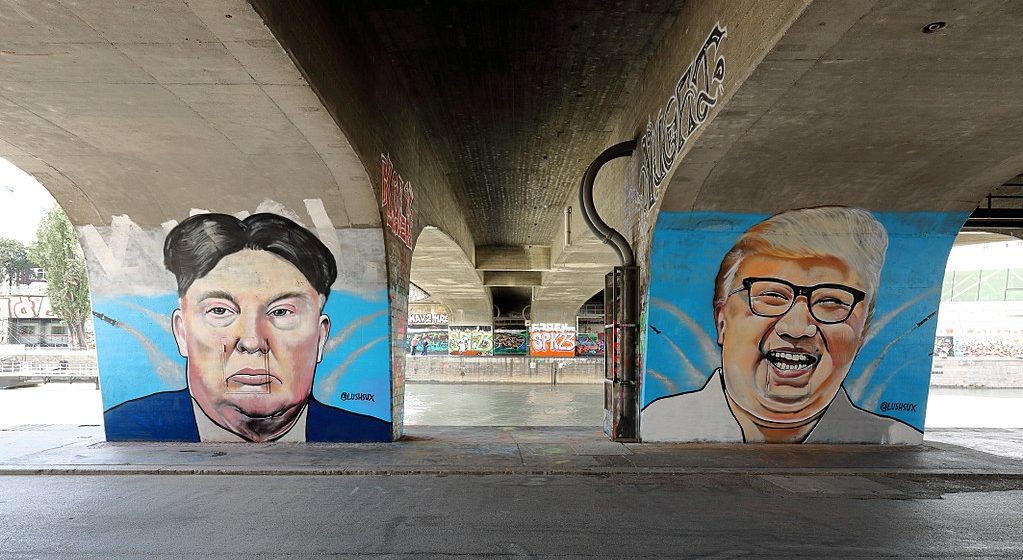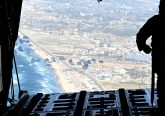Donald Trump surprised the world by accepting an invitation to meet with North Korea’s leader Kim Jong-un. The announcement came unexpectedly, after more than a year of rising tensions between the United States and North Korea over the latter’s nuclear programme. What are the reasons for this diplomatic about-face?
We can identify three reasons that have led to this development. The first is North Korea’s long-standing desire of building bilateral negotiations with the United States. The second reason is President Trump’s preference for personal and unconventional diplomacy. Finally, South Korea’s mediating role under the Moon administration has created the conditions to reopen diplomatic contacts between the two opponents.
North Korea’s Quest for US Recognition
Although North Korea has repeatedly threatened to destroy the US and its ‘puppet regime’ in Seoul, a prominent feature of the DPRK’s foreign policy since the end of the Cold War has been to establish a relationship with Washington. After the collapse of the USSR, the North Korean regime found itself in a hostile geopolitical environment: its state apparatus was fragile and plagued by famine; a dynamic and fast-growing South Korea was pulling away economically; and the North’s remaining ally, China, was far from reliable. The regime’s chance for survival then relied on either developing a nuclear deterrent or receiving security guarantees from the United States.[1]
While Pyongyang has opted for the nuclear card, somewhat counterintuitively, this is not disconnected from its quest for US recognition. North Korea’s nuclear programme was intended, in part, to force Washington to the negotiating table on “equal footing.” Indeed, the only moments in which North Korea has opened dialogue on halting its weapons programme have coincided with promises of American-North Korean reconciliation and security guarantees. In the Geneva Agreed Framework of 1994, which ended the first nuclear crisis in the Korean peninsula, the US and North Korea agreed to full normalization of political and economic relations. The only major breakthrough in the Six Party Talks happened in 2007, when DPRK and the United States undertook steps to normalize their relations. On the other hand, in other fora in which security guarantees from the US were not on the table, North Korea has repeatedly refused to discuss its nuclear programme.
Having built a dynastic regime with a strong cult of personality, that is desperate for international recognition, a bilateral summit is an excellent way to prove that Kim Jong-un is on equal footing with an US President. In the North Korean leader’s eyes, such a summit itself, no matter the outcome, represents already a victory. The time for such a meeting is ripe now because North Korea believes to have a strong hand to play in negotiations, having demonstrated its nuclear advancements.
Trump’s Penchant for Unconventional Diplomacy
Another important factor facilitating the Trump-Kim summit is the unique twist the Trump presidency is giving to American diplomacy. Trump does not seem to tolerate the world of polite, obscure, slow-paced diplomatic negotiations. In agreeing to meeting Kim Jong-un, he has rejected the long-held notion that a face-to-face meeting between the two leaders should come at the end not the beginning of negotiations, after details have been agreed on and concessions won. Trump seems to bet on his ability to apply his much trumpeted deal-making skills to international relations.
This conviction is not new. At the beginning of his presidency, Trump claimed that he could settle all issues with Kim Jong-un over a burger. The idea faded to the background as the nuclear standoff between the US and the DPRK intensified, and the President publicly criticized his Secretary of State for pursuing negotiations with North Korea. However, Trump never really abandoned his preference for face-to-face diplomacy and belief in his deal-making abilities. He obviously dislikes previous administrations’ focus on multilateral concerted effort and likes the idea of being able to take credit for a dramatic breakthrough on a problem that has long vexed US foreign policy.
Engaging in direct diplomacy with North Korea, gives the Trump administration a chance to portray itself as radically different from previous ones and portray the president as the ultimate defender of US interests in a hostile world. The evolution of the North Korean question provides a potentially compelling narrative to make this point. Trump’s supporters will argue that the President’s intensified pressure and “deal-making skills” have convinced Kim Jong-un to “come to his senses” and give up North Korea’s nuclear project.
South Korea’s Role as Mediator
While North Korea has expressed interest for dialogue every now and then, and Trump has a strong preference for unconventional diplomacy, there would be no prospect of a Trump-Kim summit without the efforts of South Korea’s president, Moon Jae-in. Moon has artfully struck a balance between making overtures to North Korea and maintaining US support. He did everything to refute any charge of appeasement, as he strongly supported further sanctions against the North and intensified military exercises with the US. However, he also worked hard to open negotiation channels with Pyongyang.
Taking advantage of diplomatic opportunity of the Olympic games, Moon and his administration actively pursued further-going dialogue with the North. In subsequent talks, Moon and his envoys have been able to extract assurances from Kim Jong-un that he would put the nuclear issue on the table. Thus, Moon laid the groundwork for the Trump-Kim summit to come about. South Korea has become an important facilitator and indispensable for communications between the US and North Korea.
What comes next?
The Trump-Kim summit is supposed to happen by the end of May, but a variety of obstacles stand in its way. First of all, it is not at all certain whether the two leaders will actually meet. No American president has ever met with a North Korean leader before. The only time this was close to happening in 2000, the meeting never occurred in the end. History could repeat itself today.
Furthermore, it is unclear how regional powers, such as Japan and China, truly feel about the summit. Japanese Prime Minister Shinzo Abe has already warned the US not settle for any intermediate outcome, such as allowing North Korea to retain its nuclear capabilities while dismantling long-range missiles. While Chinese officials publicly welcomed the prospects of talks, China will also be wary about being side-lined in these negotiations.
Finally, if it were to actually occur, it is doubtful that a Trump-Kim summit can be successful in producing a viable and stable compromise. While “denuclearization” is supposed to be on the agenda, both countries understand the issue very differently. The nuclear deterrent represents North Korea’s only security guarantee, which it would trade only for very high concessions from the United States. What Trump is willing or able to offer Kim, without upsetting the regional balance of power and traditional partners is unclear. The precedent of previous deals that North Korea reneged on will also linger. All in all, despite a welcomed change in rhetoric and posturing, prospects for a meaningful breakthrough from the Trump-Kim summit remain uncertain.
[1] Haisoon Paik, “North Korea’s Place in East Asian International Relations.” In J. Senson-Wright, and F. Rudiger (Eds.). Korea and East Asia: the Stony Road to Collective Security (2005), pp. 181-216.






